Threat-driven SOC Introduction
Cybersecurity is an ever-evolving field where understanding the tactics and techniques used by adversaries is crucial. The MITRE ATT&CK framework is a powerful tool that helps organisations develop a threat-driven approach to their Security Operations Center (SOC). This guide will walk you through the steps to integrate the MITRE ATT&CK framework into your SOC strategy, making it more effective at identifying, mitigating, and responding to threats.
What is the MITRE ATT&CK Framework?
The MITRE ATT&CK (Adversarial Tactics, Techniques, and Common Knowledge) framework is a comprehensive matrix of tactics and techniques used by cyber adversaries. It provides a detailed understanding of how attacks are structured and executed, allowing organisations to map their defenses and responses to specific threats.
Step-by-Step Guide to Using MITRE ATT&CK in Your SOC
Step 1: Understand the MITRE ATT&CK Framework
Before you can integrate the framework into your SOC, it’s essential to understand its components:
- Tactics: The “why” of an attack. Each tactic represents a goal an adversary wants to achieve, such as gaining initial access or executing a malicious payload.
- Techniques: The “how” of an attack. These are the methods adversaries use to achieve their tactical goals.
- Sub-Techniques: More detailed descriptions of the techniques.
- Procedures: Specific instances of techniques used in actual attacks.
Step 2: Assess Your Current SOC Capabilities
Evaluate your SOC’s current capabilities and identify any gaps in your threat detection and response processes. This assessment will help you understand where the MITRE ATT&CK framework can be most beneficial in implimenting a Threat-driven SOC.
Step 3: Map MITRE ATT&CK to Your SOC Tools and Processes
Align your existing security tools and processes with the MITRE ATT&CK matrix. This involves:
- Mapping Detection Tools: Identify which tactics and techniques your current tools can detect.
- Gap Analysis: Determine which techniques are not being adequately monitored and identify tools or processes needed to cover these gaps.
Step 4: Develop Use Cases and Detection Rules
To effectively create a Threat-driven SOC you first need to create specific use cases and detection rules based on the MITRE ATT&CK techniques. This includes:
- Identifying Key Techniques: Focus on techniques most relevant to your organisation and industry.
- Creating Detection Logic: Develop rules that can identify the use of these techniques in your environment.
- Testing and Tuning: Continuously test and refine these rules to reduce false positives and improve accuracy.
Step 5: Implement Threat Intelligence Integration
Incorporate threat intelligence feeds into your Threat-driven SOC operations to stay updated on the latest adversary behaviors and techniques. This integration helps in:
- Proactive Threat Hunting: Use threat intelligence to search for indicators of compromise (IOCs) associated with specific MITRE ATT&CK techniques.
- Incident Response: Enhance your incident response plans by aligning them with known adversary behaviors and techniques.
Step 6: Train Your SOC Team
Ensure your Threat-driven SOC team is well-versed in the MITRE ATT&CK framework and understands how to apply it in their daily operations. Training should include:
- Framework Fundamentals: Basic knowledge of the MITRE ATT&CK matrix and how it applies to cybersecurity.
- Tool Utilisation: Hands-on training with the tools and detection rules mapped to the framework.
- Adversary Simulation Exercises: Practical exercises simulating real-world attack scenarios based on MITRE ATT&CK techniques.
Step 7: Continuously Monitor and Improve
Cyber threats are constantly evolving, and so should your SOC. Regularly review and update your detection rules, threat intelligence integrations, and team training. Stay informed about updates to the MITRE ATT&CK framework and incorporate new techniques and tactics as they become relevant.
Step 8: Document and Share Insights
Document your Threat-Driven SOC processes, detections, and responses aligned with the MITRE ATT&CK framework. Share insights and best practices within your organisation and with the wider cybersecurity community. This collaboration can lead to improved defenses and a more robust threat landscape understanding.
Conclusion
Integrating the MITRE ATT&CK framework into your SOC operations provides a structured and comprehensive approach to threat detection and response. By following these steps, you can develop a threat-driven SOC that is well-equipped to handle the evolving cyber threat landscape.














